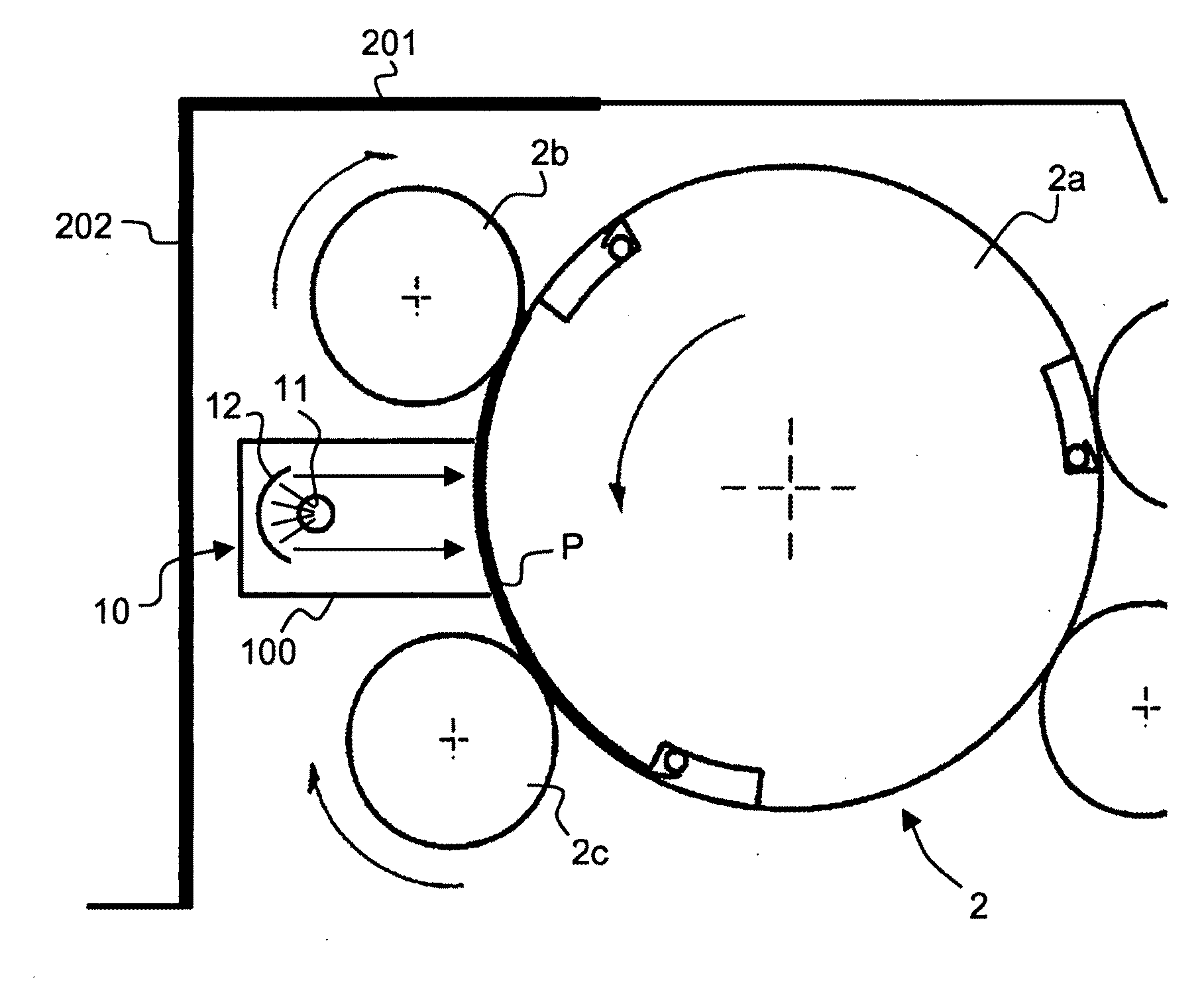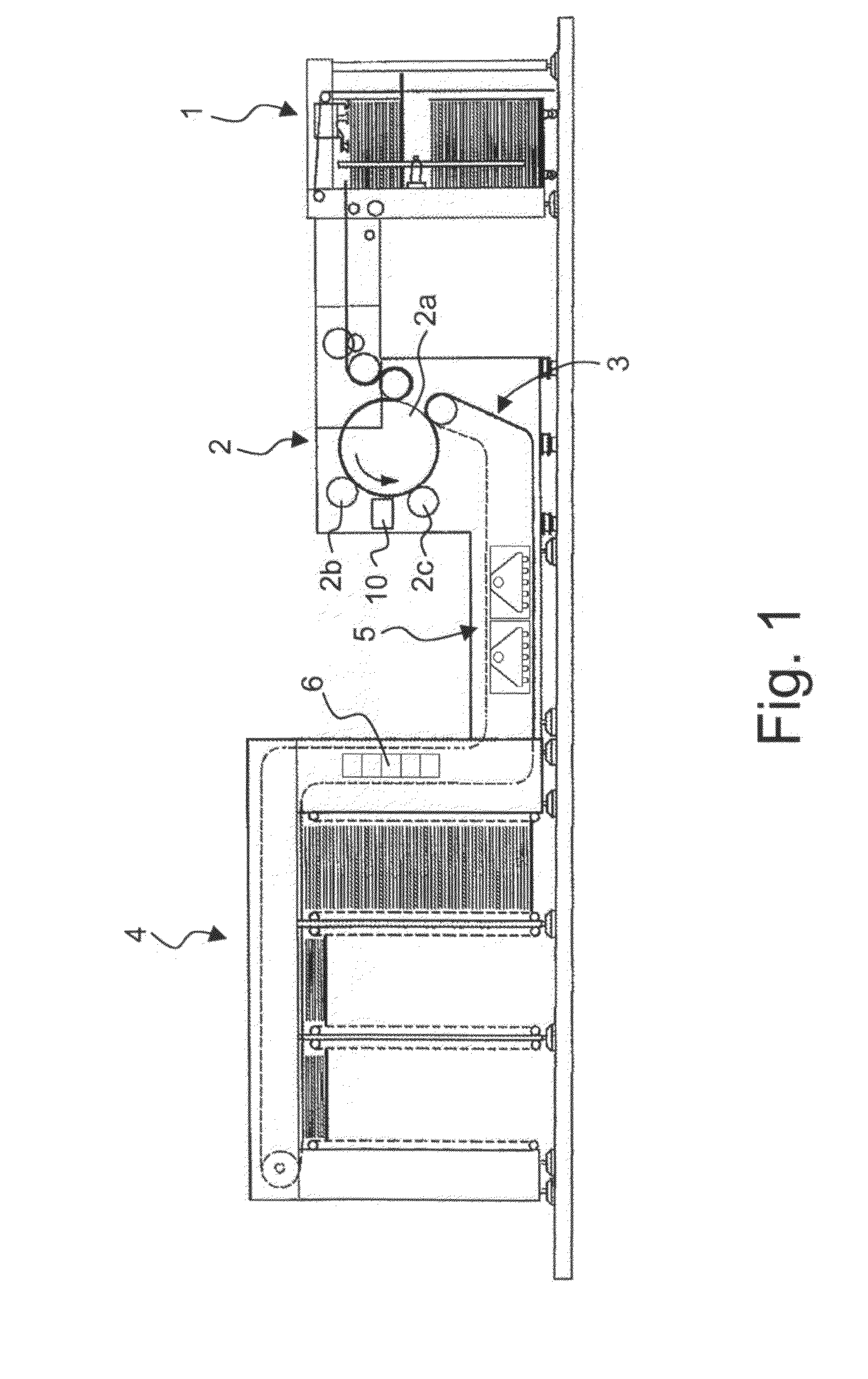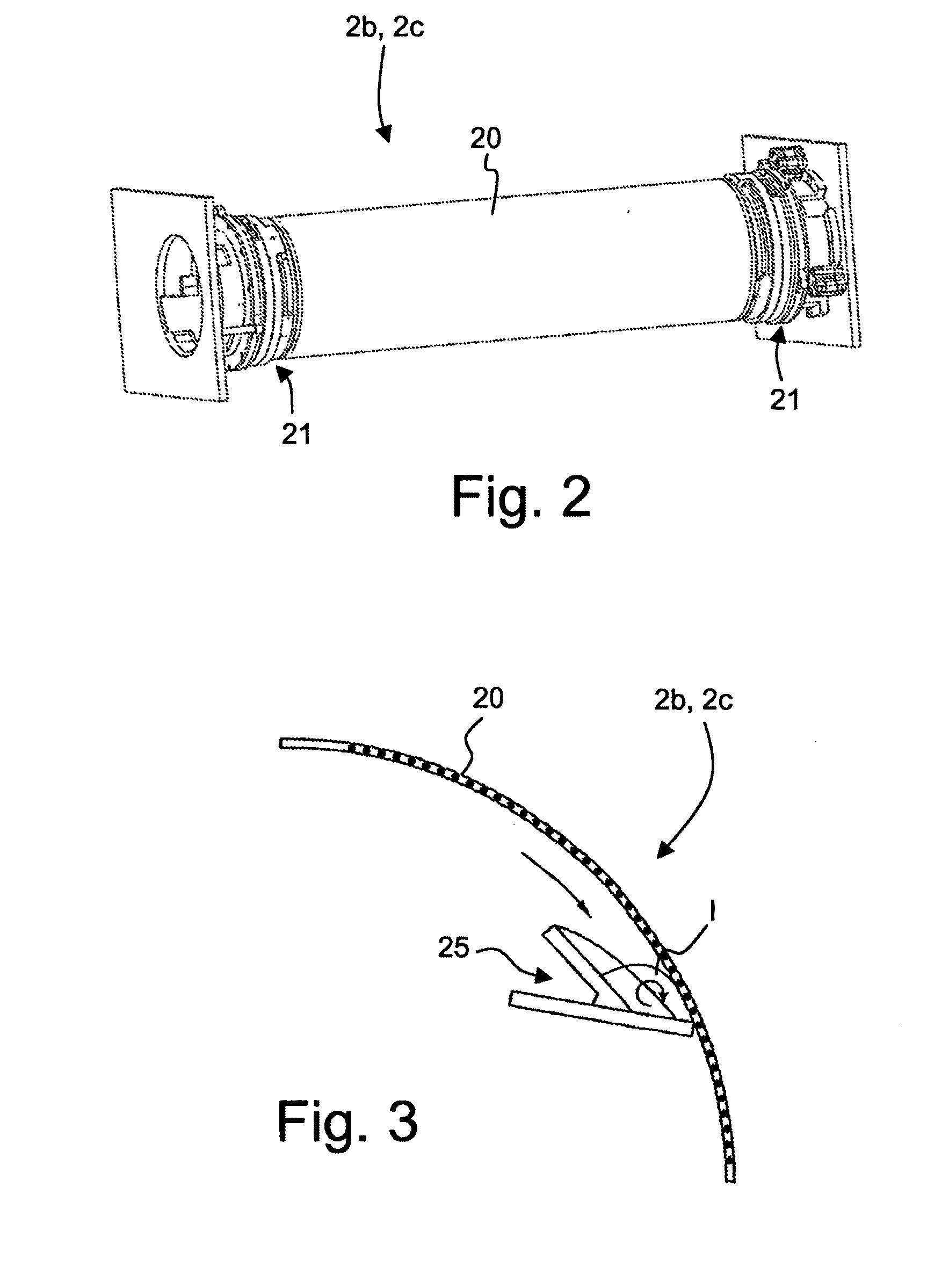Screen Printing Press and Method
a screen printing press and screen printing technology, applied in printing presses, office printing, printing, etc., can solve the problems of inability to apply patterns made of different inks in close proximity, and inability to properly dry the first ink pattern applied by the first screen printing unit, so as to achieve convenient and cost-effective implementation
- Summary
- Abstract
- Description
- Claims
- Application Information
AI Technical Summary
Benefits of technology
Problems solved by technology
Method used
Image
Examples
Embodiment Construction
[0031]The invention will be described hereinafter in the context of a sheet-fed screen printing press for printing security papers, in particular banknotes. The general configuration of the screen printing press is similar to that described in International application WO 97 / 34767. The invention is however equally applicable to a web-fed screen printing press.
[0032]Within the scope of the present invention, it shall be understood that the expression “screen printing” is equivalent to “silk-screen printing” or “serigraphy” which are also commonly used in the art. “Screen printing” generally refers to a printing process whereby ink is applied using a so-called stencil provided with a pattern of small apertures corresponding to the ink patterns to be applied, ink being forced through the apertures of the stencil using a doctor blade arrangement (such as discussed in International application No. WO 2004 / 096545).
[0033]Within the scope of the present invention, the expression “drying” wi...
PUM
 Login to View More
Login to View More Abstract
Description
Claims
Application Information
 Login to View More
Login to View More - R&D
- Intellectual Property
- Life Sciences
- Materials
- Tech Scout
- Unparalleled Data Quality
- Higher Quality Content
- 60% Fewer Hallucinations
Browse by: Latest US Patents, China's latest patents, Technical Efficacy Thesaurus, Application Domain, Technology Topic, Popular Technical Reports.
© 2025 PatSnap. All rights reserved.Legal|Privacy policy|Modern Slavery Act Transparency Statement|Sitemap|About US| Contact US: help@patsnap.com



